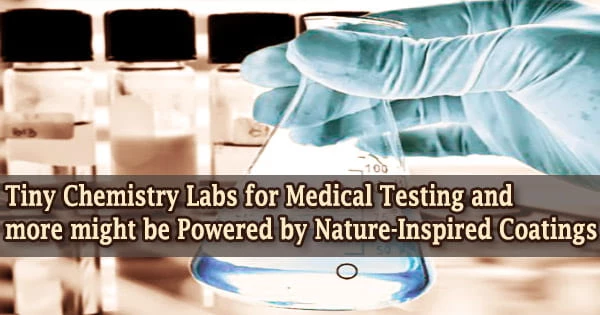A novel coating that allows certain liquids to travel over surfaces without losing fluid might lead to breakthroughs in a variety of sectors, including medical tests.
The DREAM (Durable Repellent Engineered Advanced Materials) Laboratory, lead by the University of Toronto Engineering Professor Kevin Golovin, developed a novel coating that was inspired by nature.
“Nature has already developed strategies to transport liquids across surfaces in order to survive,” says Mohammad Soltani, a researcher in the DREAM Laboratory and lead author of a new paper recently published in Advanced Functional Materials.
“We were inspired by the structural model of natural materials such as cactus leaves or spider silk. Our new technology can directionally transport not only water droplets but also low surface tension liquids that easily spread on most surfaces.”
The breakthrough has significant ramifications for microfluidics, a science in which minuscule amounts of liquids are conveyed via microscopic channels that are frequently less than a millimeter wide. This approach offers a wide range of applications, including the miniaturization of typical analytical procedures presently performed in chemical laboratories.
Microfluidics can power lab-on-a-chip devices that deliver rapid, affordable medical testing by lowering the amount of samples and chemicals necessary and automating processes for interacting with them. Proponents expect that by utilizing just a drop or two of blood, they will be able to diagnose many illnesses in minutes.
However, contemporary microfluidic devices have a significant drawback: they can only handle liquids with high surface tension, such as water. This feature, also known as cohesion, indicates that the liquid has a stronger tendency to cling to itself than to the sidewalls of the channel through which it is being conveyed.
Polymer brush coatings reduce the fluid friction and allow the droplets to be transported passively. Less friction means more energy is available to transport the liquid. We then create a driving force by designing the channels with specific patterns.
Mohammad Soltani
Like raindrops on window glass, high surface tension liquids create distinct droplets that can move about independently. Through a mechanism known as capillary action, cohesion may even be used to drag liquid droplets through the channel.
Low surface tension liquids, such as alcohols and other solvents, on the other hand, tend to adhere to the edges of the channels and can only be carried for around 10 millimeters before dissolving. Because capillary action is no longer present, the droplets must be moved by an external force such as magnetic or heat.
Low surface tension liquids may now be carried across distances of more than 150 millimeters without losing any of the liquid, which is 15 times longer than before. Two newly created polymer coatings are used in the technique, one of which is more liquid-repellent than the other.
Both are made out of polymer brushes that seem like liquid. The more resistant layer serves as a backdrop, enveloping the less repellent coating and forming microscopic channels throughout the surface. The channels allow liquids to travel in a particular pattern or direction without losing any of the liquid or requiring extra energy input during conveyance.
“Polymer brush coatings reduce the fluid friction and allow the droplets to be transported passively,” says Soltani, “Less friction means more energy is available to transport the liquid. We then create a driving force by designing the channels with specific patterns.”
Lab-on-a-chip systems will benefit from the capacity to carry low-surface-tension liquids without loss. Researchers have been able to transport liquids over greater distances, transfer numerous liquids at once along a precise track, and even merge and divide droplets using these special coatings, all without losing any volume or risking cross-contamination.
This technique will also aid in the reduction of trash in research laboratories. Researchers may reuse the same devices since no residue is left on the device’s surface, meaning there is no possibility of cross-contamination.
“We’re looking at using this technology for microfluidics bioassays, as this is an area where every drop of liquid is precious,” says Golovin. “Our findings also have great potential to advance point-of-care diagnostics, such as liver or kidney disease, where biological marker screening is often performed in non-aqueous media.”





